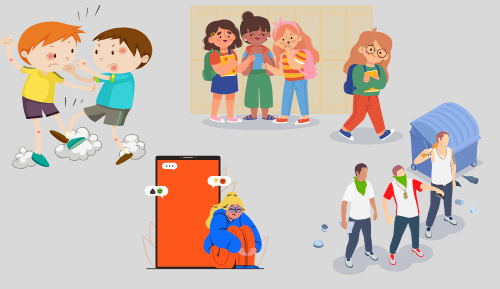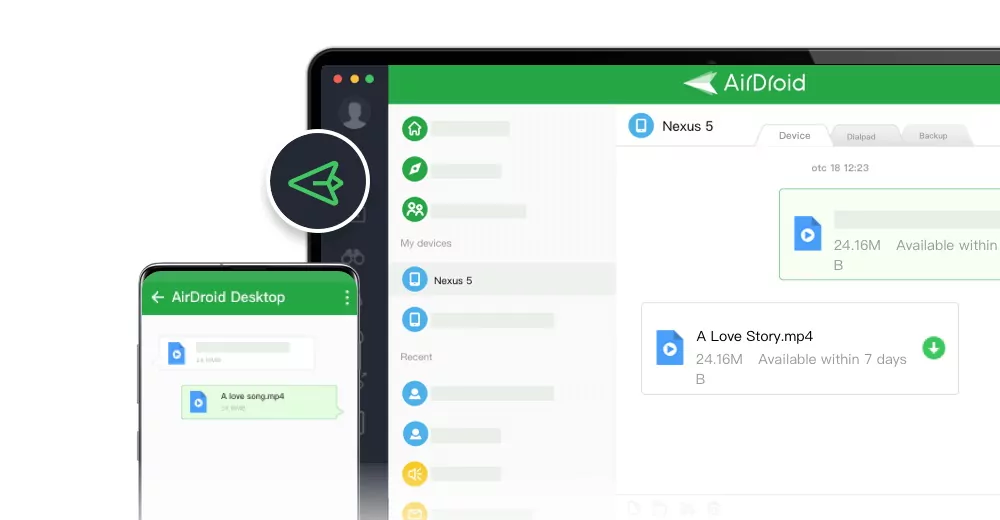Spot and Prevent Youth Violence: What Parents Should Know
Do you know how many cases of youth violence occur worldwide?
According to the WHO, about 193,000 homicides happen each year among youth aged 15–29. This staggering figure urges us, as parents or guardians, to focus more on prevention and education to ensure our children's safety.
Here, we'll discuss how, as parents, we can identify signs of youth violence and take preventive steps to protect our kids.

How Much Do You Know about Youth Violence?
Youth violence is a global public health problem. It involves young people from ages 10 to 24 getting into harmful behaviors. This can be anything from physical fights and bullying—both face-to-face and online as cyberbullying—to more serious things like robbery or gang activity.
There are many reasons why a young person might get involved in violence. It could be due to family issues, exposure to violence in their community, peer pressure, or economic hardships. Sometimes it's linked to personal experiences that have left them traumatized. We will talk more about this later.

In addition, the effects of youth violence go beyond just those involved; it can shake up families, disrupt schools, and create fear in communities.
Key Causes of Youth Violence and How They Affect Children
1. Family Environment
From an early age, your child learns from you and the type of environment you built for them. That's why when a house suffers from domestic violence, parental mental health issues, parental neglect, or extremely harsh supervision towards children, it can have various effects on children such as;
● Unhealthy aggression or anger.
● Issues with emotional regulation.
● Low self-esteem.
● Low self-worth.
● Unable to form healthy relations like good friendship or life partner.
2. Peer Pressure and Social Influence
If your child has been a part of a gang, been bullied, and faces continued social rejection or pressure due to his/her belonging to a specific group, then there is a high chance your child will grab youth violence to achieve acceptance and belongingness. This will further enhance risk-taking impulsivity, and minimize empathy.
3. Exposure to Media and Online Content
Nowadays, children can easily have access to those media that should not be consumed at their age. If they are involved in violent graphic consumption like violent games, or social media harassment and you are also not checking up on their internet usage then youth violence will feed on your child and will produce;
● Anxiety
● Anger issues
● Low emotional intelligence
● Normalization of violent behavior
4. Mental Health and Emotional Struggles
If your child is already going through mental health issues like depression, trauma, addiction, and sleep deprivation then it can increase irritability, and impulsive response in your child, which can further lead to the idea of harming their own self majorly through suicide.
Recognizing Warning Signs of Youth Violence
Once you are able to identify early warning signs, you can easily keep your child away from youth violence. Here are major indicators you should know that can point towards youth violence;
1. Behavioral Changes - Signal Aggression
Uncontrolled aggression leads to youth violence and aggression can be seen in many forms. If your child's irritability, anger, and reckless behavior increase, he/she starts using verbal threats and bad words and starts losing friends, family, and compassion from others then all these behavioral changes may signal youth violence.
2. Academic and Social Red Flags
You can see many red flags in your child's academic progress and social life if they are involved in youth violence.
Their grades will start declining, they will have poor academic performances, and there can be complaints regarding their absenteeism, disrespecting rules and elders, or bullying. You can also observe how they start isolating themselves from social life which could be due to victimization.
3. Changes in Social Circles and Hobbies
Check if your child is involved with troubles or violent peers, if they have started taking an interest in violent content like media, games, or social activities, or if they have started avoiding positive extracurricular activities or compassionate practice.
4. Monitoring Online Behavior
Hidden online activities, following extremist ideologies, or sharing disturbing content by your child is a big red flag and openly points towards indulging in youth violence.
We believe in youth having their privacy as they grow older, but that does not mean you can simply cut off your supervision, especially in their early youth. Thus for honoring their privacy and also keeping their online behavior checked we recommend you to use the AirDroid Parental Control app.
- AirDroid Parental Control
- Track your child's location in real-time.
- Monitor your child's online activity.
- Use keyword monitoring to see if your child is being cyber bullied.
5. Physical Clues of Potential Involvement in Violence
If you see injuries or bruises on your child's body, or carrying weapons then this can be a sign that your child is being involved in violent acts.
Practical Tips for Parents to Prevent Youth Violence
1. Building Open Communication
You should listen to your child and validate their feelings without making them feel any less worthy. Open communication will definitely encourage them to share things with you in the future without even having to ask and also promote positivity like honesty, transparency, trust, and respect.
2. Setting Boundaries with Media Consumption
You can monitor your child's screen time and content to keep them away from the bad side of social media by using parental control apps like AirDroid. This will also keep them more interested in their studies and building healthy social bonds like friendships.
3. Teaching Conflict Resolution and Empathy
You should also teach your child gradually about how they can manage their conflicts in the best way possible without using violations. Your child should know it's always better to hear the issues first and then calmly and rationally look for a polite way to solve any issue. It will lead to a healthy and understanding growing mindset.
4. Encouraging Positive Social Connections
The more positive your child's social connections will be, the more positively he/she will grow and adopt positive habits. A positive social environment can save your child from many bad issues including youth violences.
Key takeaway
Youth violence is on the rise and has many causes. The best way to protect your child is to understand these causes and warning signs.
By creating a safe, healthy environment, your child will learn to avoid negative influences. Talk openly with your child, validate their feelings, and teach them about right and wrong. This approach helps build honesty, self-esteem, and rational thinking as they grow.











Leave a Reply.